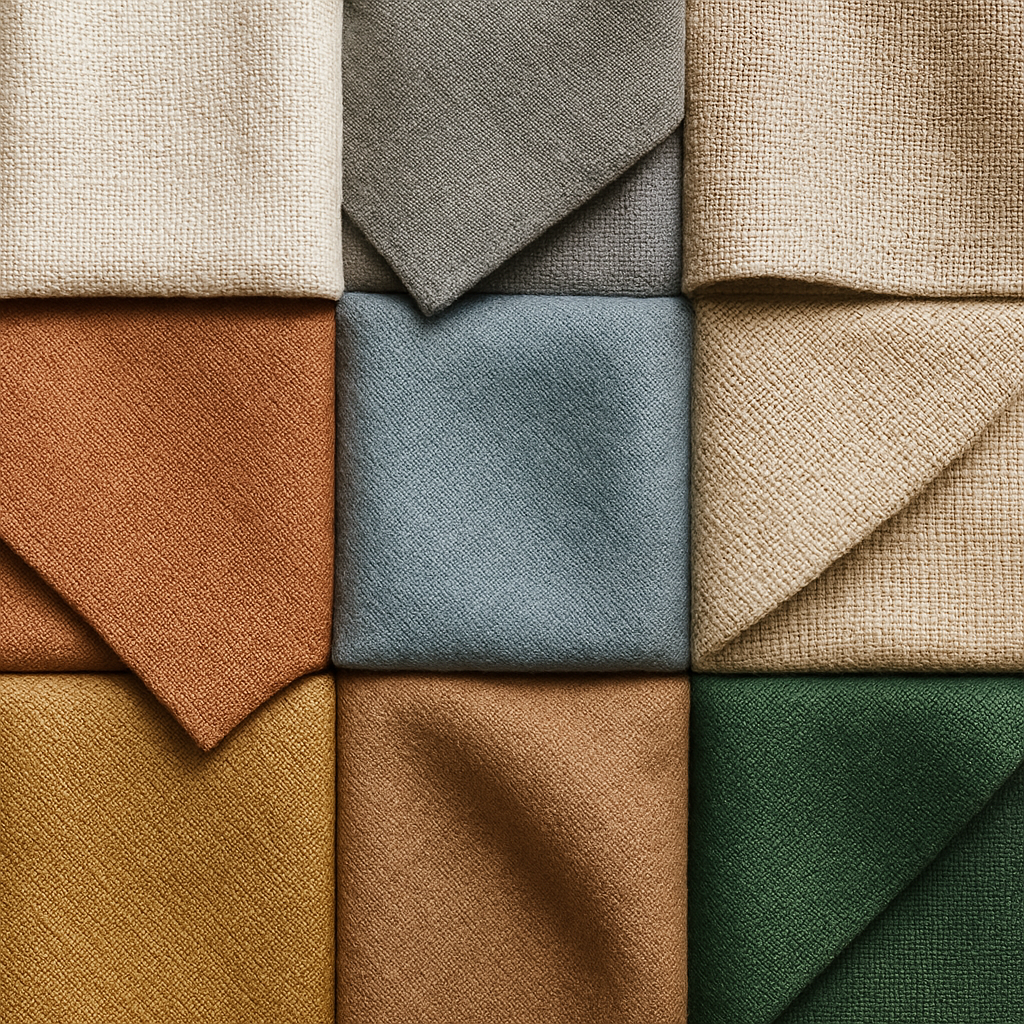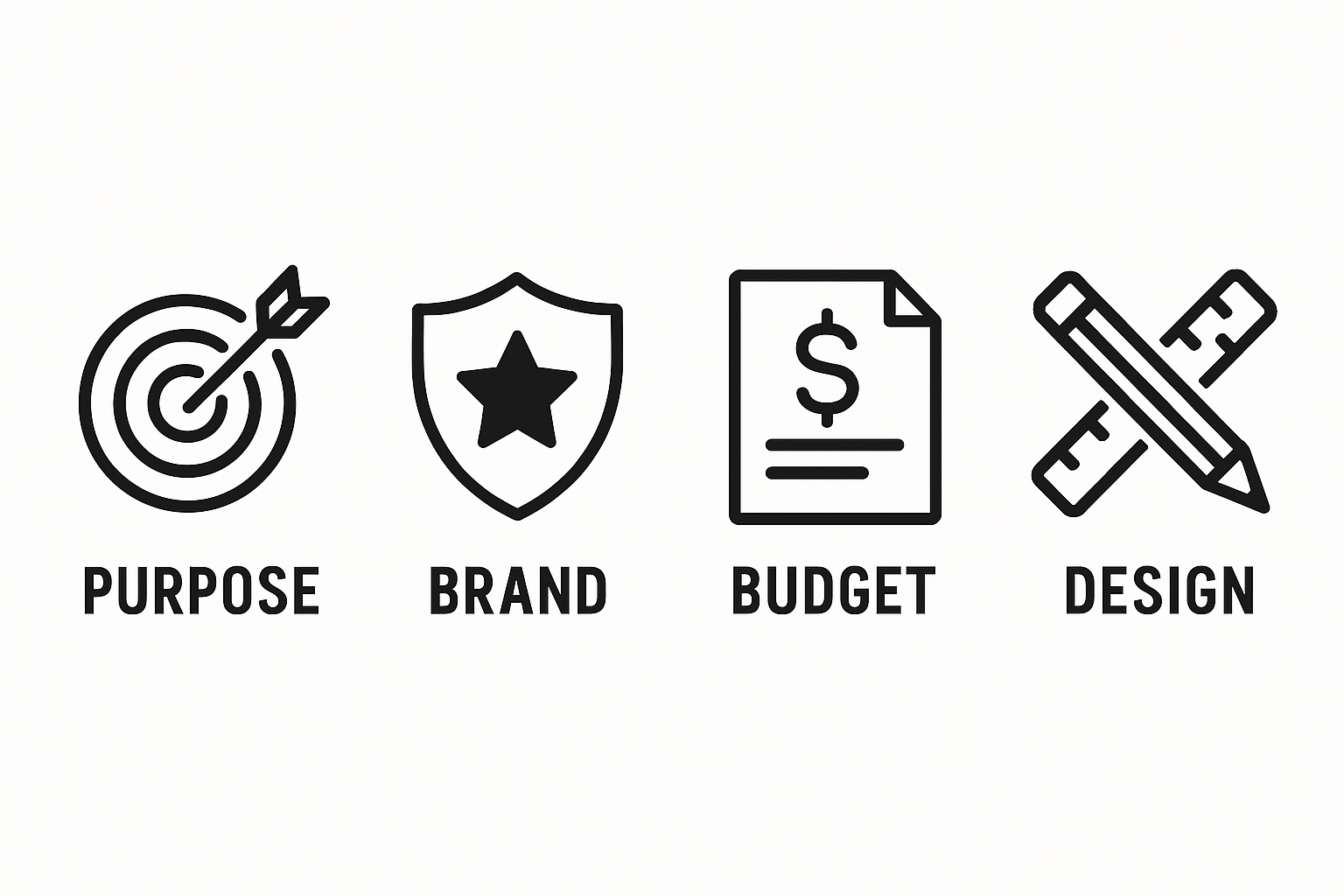You’ve done it. You’ve nailed the perfect logo, the design is a showstopper, and you’re ready to bring your brand’s custom bag to life. But hold on a second—what about the fabric?
This single choice can be the difference between a bag that people treasure and use daily, and one that gets tossed aside. The right fabric brings your design to life, feels great to the touch, and sends a powerful message about your brand. The wrong one can cheapen your look, fall apart, and miss the mark entirely.
It sounds like a lot of pressure, but don’t you worry. At Anxin Bag, we live and breathe this stuff. We’ve created this friendly guide to walk you through the world of fabrics, making it simple and clear. Let’s find the perfect material to tell your brand’s story.
Getting to Know the Materials
Think of fabrics like people—each has its own unique personality and strengths. They generally hang out in two main groups: the naturals, who are earthy and authentic, and the synthetics, who are modern and performance-driven.

The Natural Crew: Earthy, Authentic, and Full of Character
Cotton: This is the friendly, familiar face in the crowd. Made from the soft, fluffy fibers of the cotton plant, it’s breathable, gentle, and incredibly versatile. It’s an absolute dream for printing, capturing every detail of your logo beautifully whether you choose screen printing or intricate embroidery. While it’s super comfortable, remember that it can wrinkle and shrink, just like your favorite t-shirt. It’s the go-to choice for casual totes, promotional giveaways, and simple drawstring pouches.
Canvas: Meet Cotton’s tougher, more rugged sibling. Canvas is essentially a heavier, more densely woven cotton that is built to last. It has a sturdy, substantial feel and can handle just about anything you throw at it, making it perfect for heavy-duty grocery totes, book bags, and anything that needs to carry a serious load. Its textured surface gives prints a cool, slightly rustic vibe.
Jute: If your brand is all about that earthy, organic-loving lifestyle, Jute is your soulmate. Made from the fibers of the jute plant, this fabric has a raw, rustic charm with a beautiful golden hue. It’s one of the most sustainable options available, as it’s 100% biodegradable and grows incredibly fast. Its coarse texture means it’s best for simple, bold logos, and it’s the undisputed champion for eco-friendly shopping bags, wine totes, and packaging for natural products.
Linen: Linen is the effortlessly elegant one in the group. Derived from the flax plant, it’s exceptionally strong (even stronger than cotton!) and gets softer with every wash. It has a crisp, cool feel and a natural, subtle luster that whispers “quiet luxury.” While it does wrinkle easily, that’s part of its relaxed, sophisticated charm. Linen is a fantastic choice for high-end retail bags, boutique dust covers, and premium gift packaging.
The Synthetic Squad: Modern, Functional, and Polished
Velvet: Nothing says luxury quite like velvet. With its soft, dense pile and gorgeous sheen, it feels incredibly rich and indulgent. Today, most velvet is made from synthetic fibers like polyester, which makes it more durable and affordable than its silk-based ancestors. It’s the perfect fabric for protecting delicate items, making it the top choice for high-end jewelry pouches, cosmetic cases, and elegant gift bags. For branding, foil stamping or embroidery looks absolutely stunning on its plush surface.
Satin: Satin is the sleek, glamorous one, always catching the light. It’s not a fiber itself, but a special type of weave that gives fabric a glossy, smooth front and a matte back. Usually made from polyester, it feels silky smooth and has a beautiful drape. This smoothness makes it a fantastic canvas for vibrant, photo-realistic digital prints. Its only downside is that it can be a bit delicate and prone to snagging, so it’s best used for things like luxury gift bags, wedding favors, and protective pouches for delicate accessories like silk scarves.
Polyester (like Oxford cloth): This is the modern workhorse. Polyester is a do-it-all synthetic that’s tough, resistant to wrinkles and moisture, and holds color incredibly well. Fabrics like Oxford cloth, a common type of polyester, are fantastic for bags that need to be durable and functional. It’s the perfect candidate for sublimation printing, allowing for vivid, edge-to-edge designs. You’ll see it everywhere, from backpacks and lunch coolers to reusable, foldable shopping bags. For an eco-friendlier spin, you can even opt for rPET, a version made from recycled plastic bottles.
Nylon: Think light, strong, and slick. Nylon is another synthetic superstar known for its incredible strength-to-weight ratio. It’s tough as nails, resistant to abrasion, and has a smooth, slightly shiny finish. This makes it the ideal material for things that need to be both lightweight and durable, like foldable travel bags, sports packs, and drawstring gym bags.
So, How Do You Choose?
Feeling a little clearer, but still not sure which to pick? Let’s make it easy. Just thinking through these four points will usually lead you straight to the perfect fabric for your project.

What’s your bag’s mission?
Think about how people will actually use the bag. If it’s for daily grocery trips or carrying heavy books, you’ll need a durable workhorse like Canvas or Polyester. If it’s meant to present a luxury gift, you’ll want something that feels special and protective, like Velvet or Satin. For a simple trade show giveaway, a cost-effective and printable Cotton or Polyester bag is a safe bet.
What’s your brand’s vibe?
Your bag is a walking billboard, so its material should match your brand’s personality. If you’re an organic-focused or eco-conscious brand, Jute or Organic Cotton will instantly communicate those values. For a high-end, luxury brand, Velvet or Linen provides that sophisticated touch. If your brand is modern, practical, and tech-focused, the durability and clean lines of Polyester or Nylon will be a perfect fit.
Let’s talk budget.
This is always a key factor. If you need to make a big impact on a smaller budget, fabrics like Jute, Cotton, and Polyester offer incredible value. Materials like Canvas and Nylon sit comfortably in the mid-range. When you’re ready to invest in a truly premium feel, Linen and Velvet are at the higher end of the cost spectrum, but deliver an unmatched sense of quality.
How detailed is your design?
The complexity of your logo will point you to the right fabric. For simple, one-color logos, screen printing on Cotton, Canvas, or Jute is classic and cost-effective. If you have a full-color photograph or a design with complex gradients, you need a smooth surface; digital printing on Cotton or Polyester will make your artwork pop. For a rich, three-dimensional effect, nothing beats embroidery, which looks fantastic on sturdy fabrics like Canvas or even the plushness of Velvet.
The Right Fabric Tells Your Story
See? Choosing a fabric isn’t so scary after all. It’s simply about finding the material whose story best matches your brand’s. Getting it right elevates your bag from a simple container to a desirable object—a piece of your brand that customers will want to carry and show off.
Ready to create a custom bag that people will love? The expert team at Anxin Bag is here to help. Get in touch with us today, and let’s turn your vision into a tangible reality!

发表回复